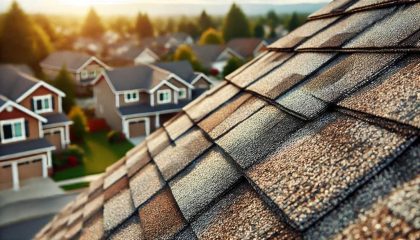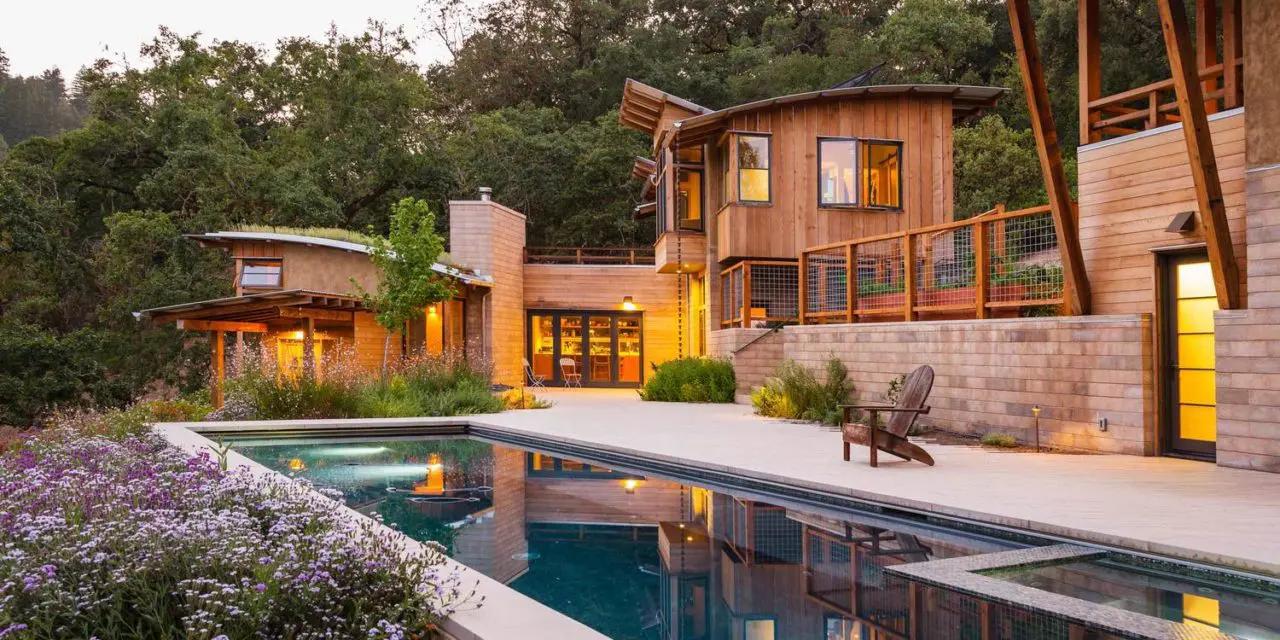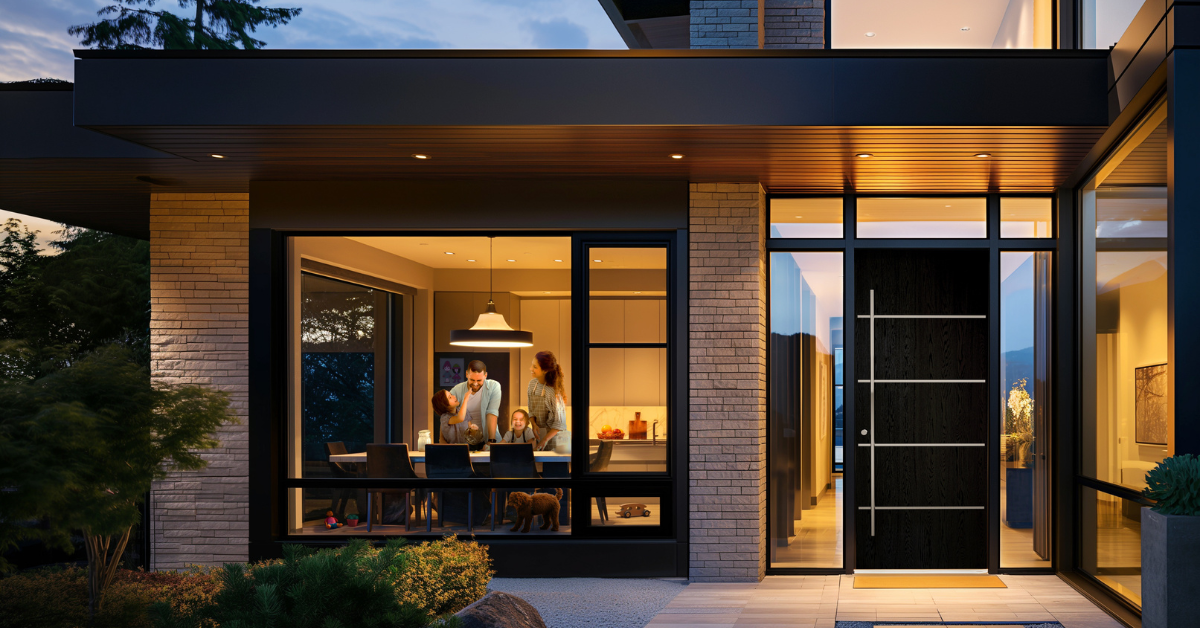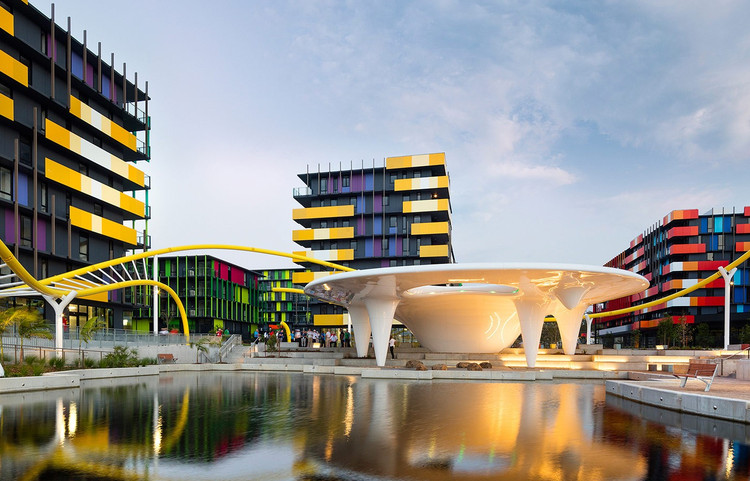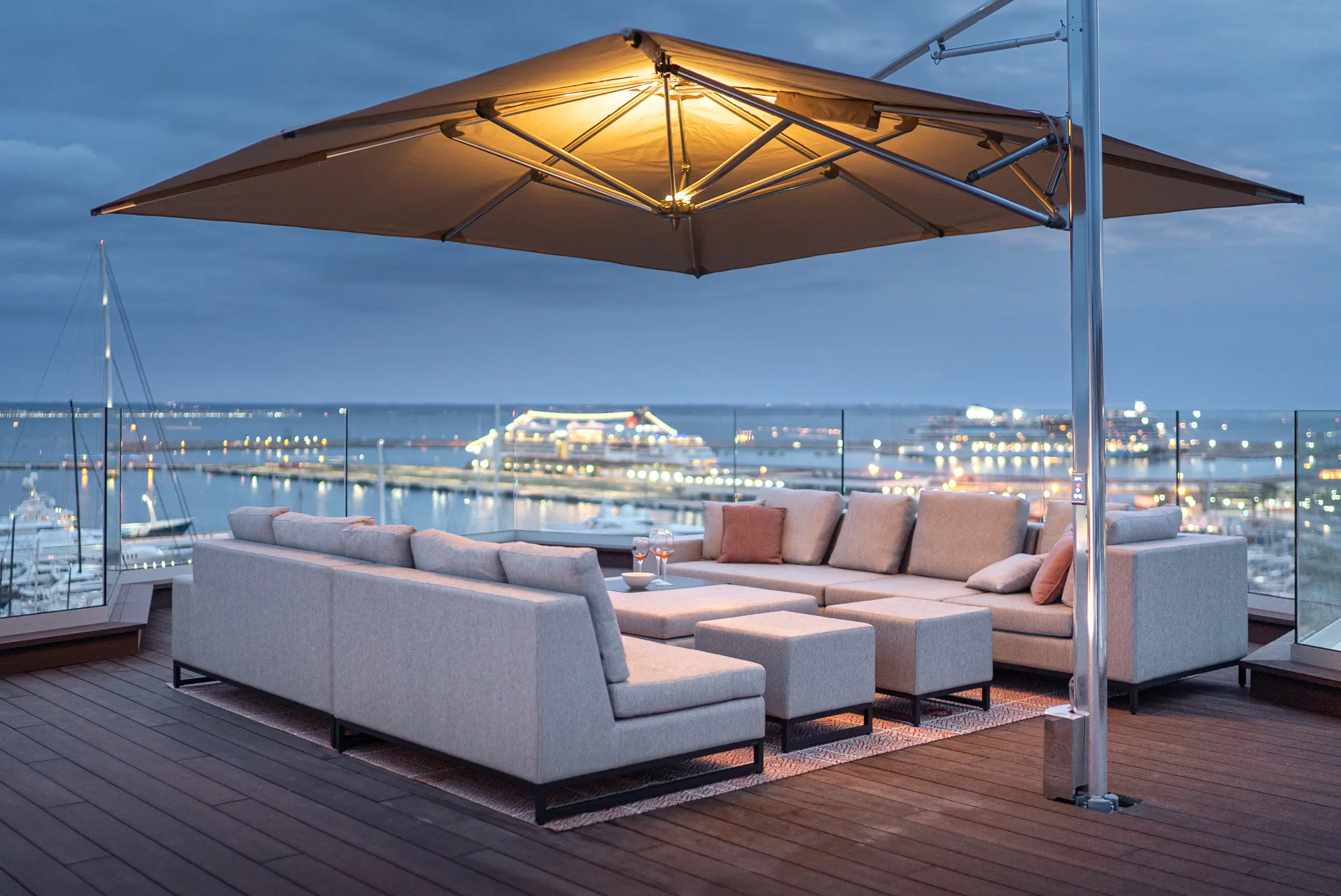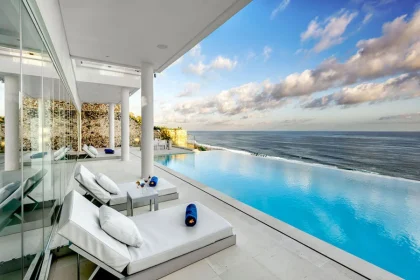A mixed material facade is an architectural approach where different materials, such as glass, stone, wood, concrete, aluminum, or composite panels, are combined to form the external skin of a building. Instead of using a single dominant material, architects use a carefully selected blend to create a unique identity, improve performance, and enhance durability.
This design philosophy is gaining significant attention because it brings together functionality and aesthetics. Modern cities increasingly showcase buildings that highlight multiple materials, seamlessly blending tradition and innovation.
The growing use of mixed material facades is not only about style but also about sustainability, energy efficiency, and adaptability to diverse climates. This makes them one of the most important trends in contemporary architecture.
Understanding Mixed Material Facades
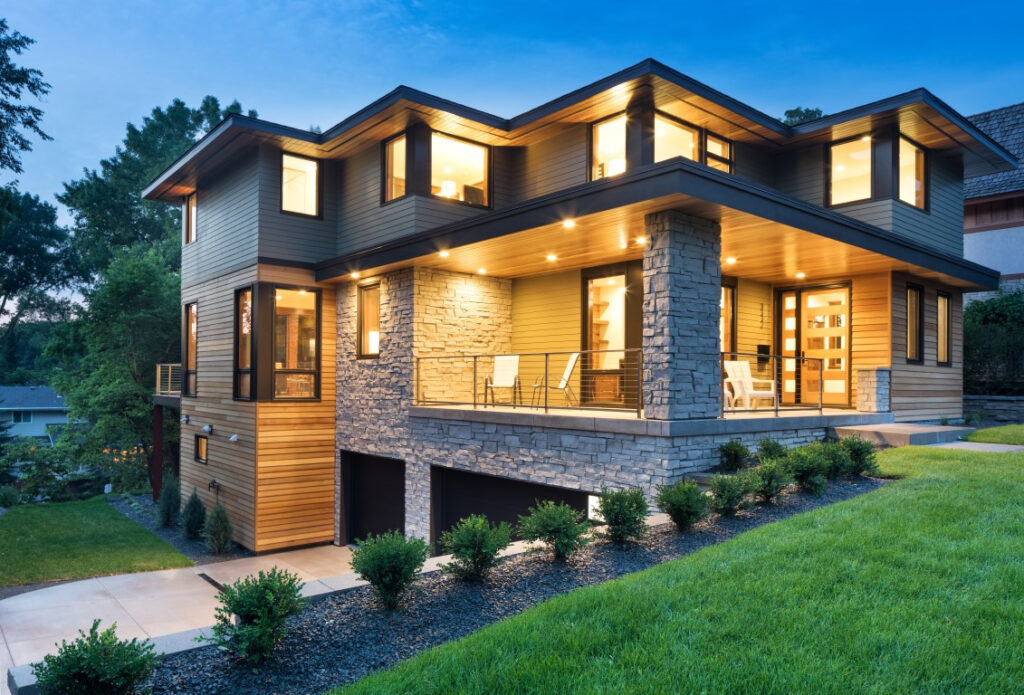
st.hzcdn.com
Mixed material facades are external building systems that integrate two or more different construction materials into a unified design. The goal is to achieve both visual appeal and superior performance. Instead of monotone, repetitive exteriors, these facades introduce contrast, texture, and depth by blending materials like glass, wood, aluminum, stone, and high-performance composites.
The concept addresses both form and function. From an aesthetic perspective, mixed material facades break the monotony and allow buildings to stand out. From a functional perspective, they enhance durability, improve energy efficiency, and meet sustainability standards. Architects often adopt these facades to balance traditional charm with modern innovation.
Benefits of Mixed Material Facades
Mixed material facades are not simply about looks. They bring numerous practical benefits to both commercial and residential projects:
Durability and Weather Resistance
Different materials complement one another to create a stronger exterior. For example, natural stone provides resistance to erosion, while aluminum or composite panels add flexibility and low maintenance. This synergy makes facades more resilient to extreme weather conditions, temperature fluctuations, and urban pollution.
Energy Efficiency and Insulation
Many mixed material systems include high-performance insulated panels and energy-efficient coatings. By combining these with materials like glass or stone, buildings can maintain stable indoor temperatures, reducing the need for constant heating or cooling. This translates into significant energy savings over time.
Aesthetic Versatility
Mixed material facades offer endless design possibilities. A building can combine sleek glass with warm wood, or rugged stone with modern aluminum. This variety allows architects to create exteriors that reflect the cultural, environmental, and functional identity of the project.
Sustainability
With growing emphasis on green building practices, mixed facades allow integration of eco-friendly materials such as FSC-certified wood, recycled metals, and energy-efficient composites. These choices help reduce environmental impact while still delivering beautiful and durable designs.
Increased Property Value
A striking facade enhances the overall perception of a building. Whether for commercial offices or luxury homes, a mixed material facade often boosts real estate value because it conveys modernity, sustainability, and prestige.
Real-World Product Examples of Mixed Material Facades
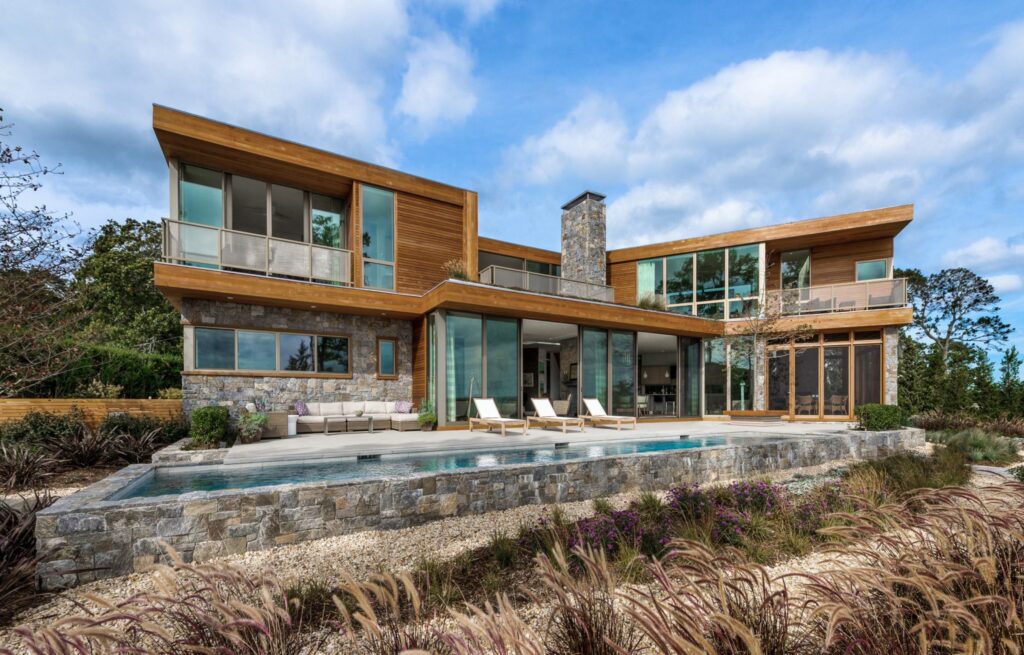
d1h3pk8iipmcfn.cloudfront.net
To better understand how mixed material facades are applied, let’s examine real-world examples of leading facade systems used globally.
1. Alucobond Aluminum Composite Panels
Alucobond is one of the most widely recognized brands in facade design. Their aluminum composite panels are lightweight, durable, and versatile. These panels are often paired with glass curtain walls or natural stone cladding to produce modern and sleek exteriors.
The material is particularly popular in urban high-rise projects because it resists corrosion, weathering, and UV radiation. Alucobond panels also come in a variety of finishes and colors, allowing for creativity and design flexibility.
2. Trespa Meteon High-Pressure Laminate Panels
Trespa Meteon panels are engineered from high-pressure laminates, designed for high-performance building exteriors. They are often combined with metals, concrete, or glass to create bold architectural statements.
What makes Trespa unique is its wide selection of finishes, from wood-like appearances to vivid solid colors. This versatility enables architects to achieve natural aesthetics or contemporary designs while benefiting from the durability of engineered panels.
3. Stone Panels International Lightweight Stone Systems
Traditional stone facades are beautiful but heavy, expensive, and difficult to install. Stone Panels International revolutionized this by offering lightweight natural stone veneer systems that can be paired with aluminum, glass, or composite materials.
These panels preserve the authentic look of natural stone while reducing structural load. They are also easier to install, making them a practical choice for mixed facades in both commercial and residential applications.
4. Kingspan Insulated Facade Systems
Kingspan specializes in insulated panel systems that combine energy efficiency with aesthetic appeal. These systems are often used alongside aluminum composite panels or glass to provide both visual impact and superior thermal insulation.
The panels are customizable in terms of color, texture, and finish, allowing them to blend seamlessly with other materials. Kingspan’s technology-driven approach makes its systems highly efficient in reducing energy consumption.
5. Parklex Facade Natural Wood Panels
Parklex is known for its natural wood panels designed for exterior use. When combined with glass or metal cladding, Parklex panels bring warmth and organic texture to a building’s exterior.
Unlike untreated wood, Parklex products are specially treated to resist UV damage, moisture, and environmental wear. This makes them an excellent option for architects who want to incorporate natural materials without compromising durability.
Technology Driving Mixed Material Facades
The advancement of technology has transformed how facades are designed, produced, and maintained.
Digital Design and 3D Modeling
Modern design software allows architects to experiment with different materials in virtual environments before construction. This ensures that structural integrity and aesthetics align perfectly.
Nanotechnology Coatings
Advanced coatings protect facades from graffiti, UV exposure, and pollutants. These coatings extend the lifespan of facades and reduce maintenance costs.
Smart Energy Solutions
Some facade systems incorporate dynamic elements such as smart glass that adjusts transparency based on sunlight, reducing glare and improving energy efficiency.
Sustainable Manufacturing
With CNC cutting and digital fabrication, manufacturers can produce facade panels with minimal waste. Many companies also use recycled materials to reduce their carbon footprints.
Practical Use Cases for Mixed Material Facades
Mixed material facades are not just an architectural trend; they are highly functional design solutions used in different building types across the world. Their adaptability makes them suitable for residential, commercial, cultural, and sustainable projects, each with unique demands. Below are some of the most practical use cases where mixed material facades provide outstanding value.
Urban Skyscrapers and Office Towers
High-rise buildings in dense urban centers often rely on glass and aluminum combinations. Glass provides natural light and a sense of openness, while aluminum or steel adds structural resilience and sleekness. This combination reduces reliance on artificial lighting, improves energy efficiency, and enhances the professional look of city skylines.
Another benefit is wind resistance. Tall towers face high wind loads, and lightweight materials like aluminum cladding can withstand these forces while protecting the glass curtain walls. Together, these materials balance performance, efficiency, and modern aesthetics.
Suburban Residential Communities
In suburban housing developments, architects often choose stone, brick, and wood facades. Stone and brick add permanence, durability, and weather resistance, while wood provides warmth and a natural aesthetic that blends into green surroundings.
For families, this mix offers energy efficiency and cost-effectiveness. Brick and stone regulate temperature, keeping homes cooler in summer and warmer in winter. Wood enhances curb appeal, making homes both practical and visually welcoming.
Public Institutions and Civic Buildings
Museums, libraries, and government buildings frequently use concrete, stone, and glass combinations. Concrete projects authority and permanence, stone highlights cultural heritage, and glass introduces transparency and accessibility.
This is especially important for public buildings that serve as landmarks. By mixing materials, architects ensure these spaces communicate values of stability, openness, and inclusivity while also meeting functional needs such as durability and visitor comfort.
Educational Campuses
Universities and schools are now embracing brick and metal facades. Brick reflects tradition and academia’s historic roots, while steel or aluminum panels represent innovation and forward-thinking.
This duality is powerful for campuses that want to emphasize both heritage and progress. Moreover, these facades are low-maintenance and energy-efficient, making them cost-effective choices for institutions managing large facilities.
Luxury Hotels and Resorts
Hospitality projects often experiment with wood, glass, and stone combinations to deliver luxury experiences. Glass captures stunning views, wood brings warmth and intimacy, and stone conveys timeless elegance.
For example, a beachfront resort may use wood for balcony details, glass for panoramic ocean views, and stone for lobby exteriors. This combination creates a memorable guest experience that reflects the location’s natural environment while standing out in the competitive luxury market.
Sustainable and Eco-Friendly Housing
Green architecture relies heavily on composite panels, bamboo, recycled wood, and solar-integrated facades. These materials reduce carbon emissions while offering flexible design options.
Homeowners benefit from reduced energy bills, better indoor comfort, and a reduced ecological footprint. By using recycled or renewable materials, these projects also showcase a commitment to sustainability, something that appeals to eco-conscious buyers.
Benefits of Using Mixed Material Facades
When evaluating why these facades are becoming more popular, the following benefits stand out:
- Visual Uniqueness: No two mixed facades look alike, giving each project individuality.
- Improved Performance: Materials like insulated panels work with glass or stone to deliver better thermal efficiency.
- Cultural Adaptability: Mixed facades allow designers to incorporate materials that reflect local culture or heritage.
- Reduced Maintenance: Engineered panels combined with durable natural elements minimize repair needs.
- Market Advantage: Properties with mixed facades often command higher rental or resale values due to their contemporary design.
How Mixed Material Facades Solve Problems
Mixed material facades solve a variety of construction and design challenges:
- Problem: Uniform, unappealing exteriors.
Solution: Combining materials introduces depth, contrast, and character. - Problem: High energy bills due to poor insulation.
Solution: Integration of insulated systems and smart glass reduces energy consumption. - Problem: Heavy, impractical natural materials.
Solution: Lightweight stone or engineered composites replicate natural beauty without structural drawbacks. - Problem: Short lifespan of traditional materials.
Solution: Advanced engineered materials extend durability and require less maintenance.
Buying Mixed Material Facades
When purchasing mixed material facade systems, buyers should consider:
- Trusted Manufacturers: Companies like Alucobond, Trespa, Kingspan, Stone Panels International, and Parklex have established reputations.
- Compatibility: Ensure materials are structurally compatible and align with local building codes.
- Design Goals: Select materials that reflect both functional needs and desired aesthetics.
- Sustainability Certifications: Opt for products that meet green building standards if eco-friendliness is a priority.
Products are typically available through official distributors, construction suppliers, or directly from manufacturers. Architects and contractors should guide buyers to ensure proper installation and integration.
Frequently Asked Questions
1. Are mixed-material facades suitable for all climates?
Yes. Because they integrate multiple materials, these facades can be tailored to suit hot, cold, or humid environments. For example, insulated panels are excellent in colder climates, while treated wood and stone perform well in humid regions.
2. Do mixed material facades require high maintenance?
Not necessarily. Many modern facade products are engineered to resist UV radiation, moisture, and environmental wear. Maintenance requirements depend on the chosen materials but are generally lower than traditional facades.
3. Can homeowners use mixed material facades, or are they only for commercial projects?
Mixed facades are suitable for both. While commercial buildings often showcase large-scale mixed facades, residential homeowners increasingly use combinations of wood, stone, and glass to achieve unique home exteriors.

